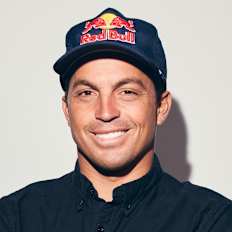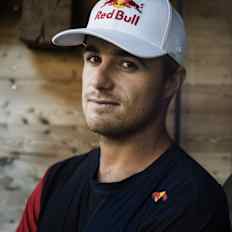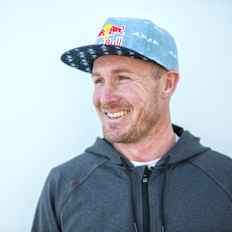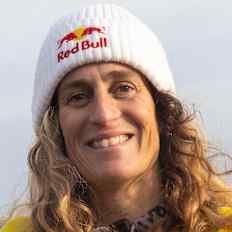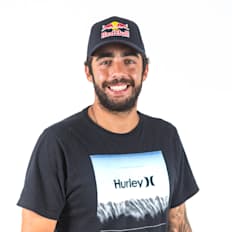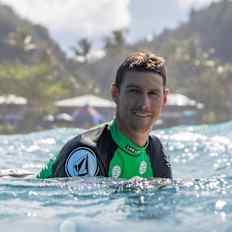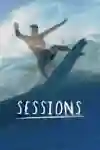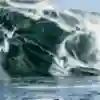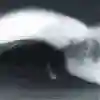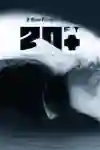Surfing
Surfing
Can pro surfers tame the titans? Inside the WSL Big Wave season
With the competition window now open for the 2025 TUDOR Nazaré Big Wave Challenge, discover what makes big wave surfing so compelling, and the tools required to unlock the sport's final frontier.

A "green alert" has been issued by the World Surf League (WSL) for the much-anticipated 2024/2025 TUDOR Nazaré Big Wave Challenge, which will take place at Praia do Norte, Nazaré, Portugal, on Tuesday, February 18. This signals the arrival of the world’s top 18 big wave surfers, all set to compete in one of the most thrilling events of the year.

14 min
Carlos Burle looks back on a big career
At the end of the 2018 big-wave season, Brazilian Carlos Burle announced his retirement. Here's a look at where his career is heading next.
The sport of surfing is spectacular, to begin with, but big wave surfing takes things to a whole new level altogether. There's nothing quite like seeing a surfer ride a mountain of water across the open ocean, which is why big wave surfing competitions have become must-see viewing.
Brazil's Carlos Burle became the WSL's first Big Wave World Tour champion in 2009-10 after making the final at each of the season's four BWWT events, at Pico Alto in Chile, Punta Lobos in Peru, Maverick's in California, and Todos Santos in Mexico. Over the following decade, the tour crowned six world champions across a string of events, with Grant "Twiggy" Baker (3) and Greg Long (2) being the only multiple Big Wave World Champions. The tour peaked in 2016, the year of Long's second title, when six events ran around the world.
From 2019, the WSL changed tack, and instead of a series of events, it focused on two contests held at Jaws (paddle) and Nazaré (tow), with no world champion crowned. Currently, the TUDOR Nazaré Big Wave Challenge is the only big wave event the WSL runs, while some non-WSL events like The Eddie Aikau Invitational continue to run. With the Nazaré event window now open and running until March 31, there's no better time to delve into what makes this competition so special.
01
What does a big wave surfing event consist of?
Yes, it's all about catching giant waves, but there are nuances. Each event has a different format and a different judging system, and while in theory the biggest wave should win, the risk involved with taming a wave, the precision and execution while doing so, and even the surfer's style can all come into play when scoring a surfer's waves.
Big wave competitions are generally individual pursuits, though events like the TUDOR Nazaré Big Wave Challenge rely heavily on the team aspect that a successfully ridden tow wave requires. A good surfer can't win with a bad driver, and vice versa.
02
When does the big wave season start?
The big wave seasons match up with each hemisphere's winter. In the southern hemisphere this can be anywhere from April to September, while in Europe, Hawaii and North America, you're more likely to find big waves from September to April.

1 min
This And Nothing Else: Mavericks Extras
An extra bit from Red Bull's This Has Nothing Else series on XXL Mavericks.
A powerful swell alone isn't enough to trigger a big wave competition; there are other variables to take into account, such as winds, tides and swell direction. As these events require extraordinary swells, they have far longer waiting periods than a regular contest, to boost the chances of conditions lining up and competition getting the green light.
03
Equipment
You can't talk about the history of big wave surfing without bringing up surfboard design, which has seen radical changes in the past 30 years. Initially, boards up to 10 feet (3m) in length were used to paddle into behemoth waves.
At the turn of the millennium came the tow-in era, and the strapped boards ridden by jetski-assisted surfers resembled something a little closer to a wakeboard than a traditional rhino chaser. Still, to this day, when towing into heavy Australian reef slabs, straps, and tow-specific boards are left on the beach in favour of traditional shortboards, the ease of access the jetski provides is great.
While the tow era was fun, it didn't last long as the pursuit of choice, as paddling into waves previously thought uncatchable barehanded, suddenly caught on anew. Fresh takes on equipment unleashed a new generation of hardcore paddle surfers, keen to push themselves and the tools of their trade to the limit.
"In the beginning, we were looking for comfort when catching big waves," explains Basque shredder Natxo González. "We wanted to be able to anticipate the mass of water coming at us, and then simply drop in. Now, the boards have been refined and are more for high performance. Boards are much more manageable, so we can move a lot easier, make turns, and manoeuvre them with more control."
04
Where is the WSL Big Wave season taking place?
The current WSL Big Wave season runs from November 1, 2024, until March 31, 2025, with the famed Praia do Norte in Nazaré, Portugal, the location for the TUDOR Nazaré Big Wave Challenge. The site of historic world records, Praia do Norte will provide a huge challenge for surfers who come to Portugal from all corners of the globe, hellbent on pushing their personal limits.
WSL event directors look for a consistent forecast guaranteeing 25-foot (8m) conditions throughout the single-day competition. If all conditions are favourable, the organisation will issue a probable start update, known as a Yellow Alert, 72 hours out from the potential run day. If conditions continue to trend in a favourable direction a Green Alert will be issued, meaning competition is all set to run, and fans can ready themselves to watch their favourite big wave surfers pushing their limits in the very near future.
05
2025 TUDOR Nazaré Big Wave Challenge

3 min
The mighty waves of Nazaré
Enjoy big-wave surfers taking on the monstrous slabs at Nazaré.
Held in the powerful beachbreak waves of Praio do Norte at the mouth of the undersea Nazaré Canyon, the one-day TUDOR Nazaré Big Wave Challenge will feature nine teams of two competitors surfing in the world's only tow-in event. Teams are divided into three groups, consisting of three teams. The competition spans six 40-minute heats, with each group surfing in two heats, and each team alternating between surfing, and towing their partner into waves.
While most big wave events are individual, this team-based format highlights the importance of collaboration in tow-in surfing. The sport itself has evolved significantly, with advanced safety measures, jet ski technology, and even drones ensuring surfers can perform at their best while minimizing risks.
At the end of the day a surfer’s best two wave scores from either heat will count toward a total individual score, with the best wave counting double. A surfer’s maximum individual score is 30 points, given each wave is scored between zero and 10 points.
06
2025 Nazaré Tow Surfing Challenge Invitees:
- Team 1: Lucas 'Chumbo' Chianca (BRA) and Pedro 'Scooby' Vianna (BRA)
- Team 2: Nic von Rupp (POR) and Clement Roseyro (FRA)
- Team 3: Rodrigo Koxa (BRA) and Vitor Faria (BRA)
- Team 4: Rafael Tapia (CHL) and Pierre Rollet (FRA)
- Team 5: Andrew Cotton (GBR) and Garrett McNamara (USA)
- Team 7: Michelle des Bouillons (BRA) and Ian Cosenza (BRA)
- Team 8: Justine Dupont (FRA) and Éric Rebière (BRA)
- Team 9: Laura Crane (GBR) and Antonio Laureano (POR)
07
The history of big wave surfing
For centuries, Hawaiians surfed together in the smaller waves of Oahu's south shore along the beaches of what is now Honolulu and Waikiki. However, as the sport gained popularity and surfboard technology and construction improved, Hawaiian surfers began to turn their attention further afield to the waves of the west side and north shores of Oahu.
Boardriders from around the world began flocking to Hawaii in winter to pit themselves against the power of the Pacific in a surfing rite of passage that quickly saw Oahu's North Shore become known as "the proving ground".
Kai Lenny competing in The Eddie Aikau Invitational at Waimea Bay in Hawaii
© Trevor Moran/Red Bull Content Pool
While big wave surfing went from strength to strength in Hawaii, it was flourishing overseas as well, with surfers from the US mainland, Australia, South America, Africa and even Europe starting to challenge themselves at every opportunity.
As the new millennium landed, tow-surfing locked in a decade-plus run as the preferred medium for tackling the world's biggest waves, before a new generation of purists put paddling back in its rightful place atop the big wave surfing totem. Jetskis were moved sideways to head up safety duties, until conditions get serious enough to warrant whipping surfers into waves, then all bets are off.
Stay tuned to the TUDOR Nazaré Big Wave Challenge event site for all the updates you'll need from the world's most famous lighthouse, at Nazaré, Portugal.
Part of this story



